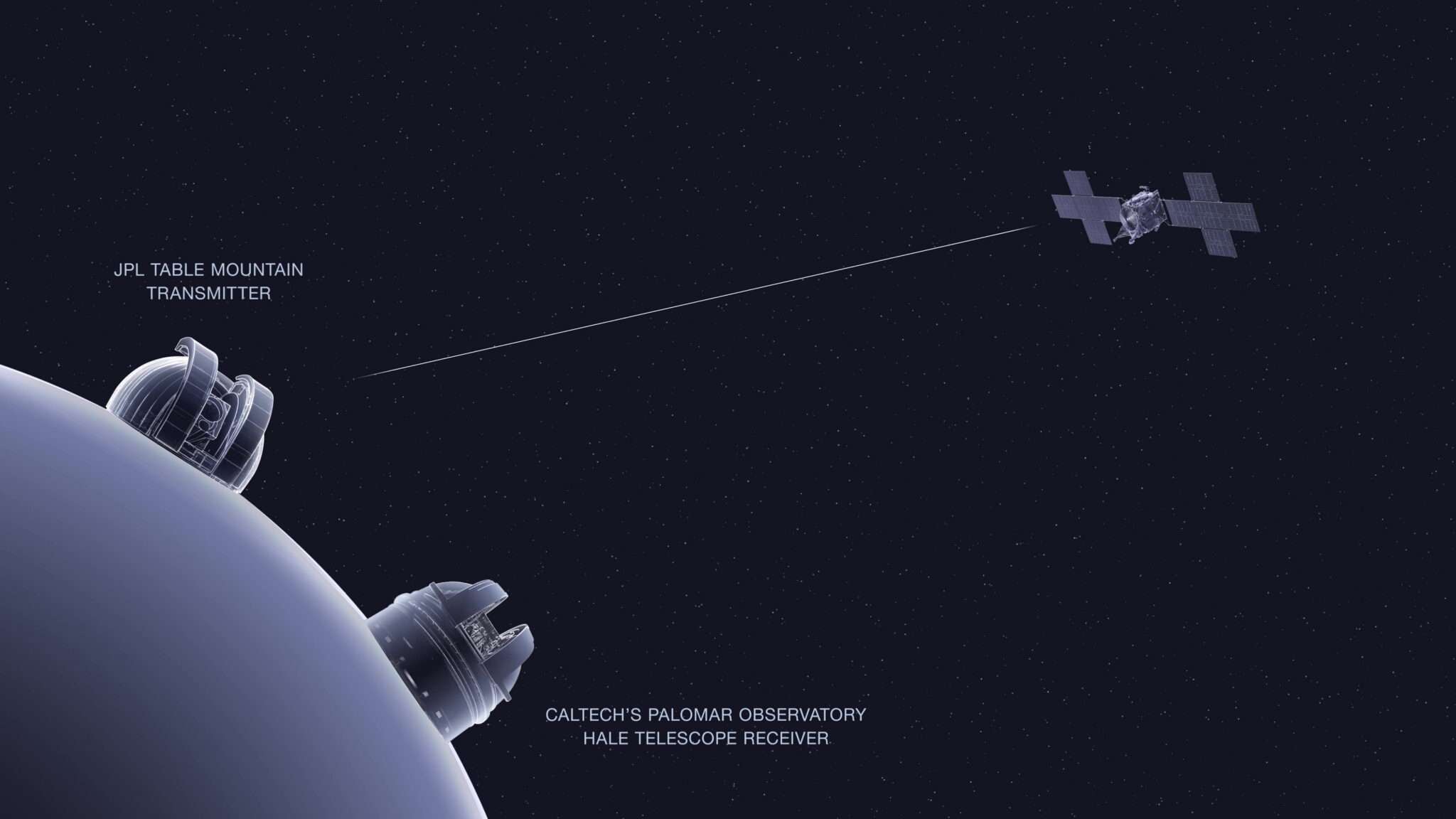New Medicines May Lie Under the Sea-This Device Sniffs Them Out
The device could "easily" concentrate molecules that are present in underwater caves and holds promise for drug discovery among these places.

NASA's Deep Space Optical Communications (DSOC) experiment has succeeded in sending and receiving communications via laserbeam, and is now set to transform how spaceships communicate with each other and with Earth in the spacefaring future.
The test data was beamed about 40 times farther than the Moon is from Earth, from the recently-launched Psyche spacecraft to the Hale Telescope at Caltech's Palomar Observatory in San Diego County, California.
The DSOC experiment aims to demonstrate data transmission rates 10 to 100 times greater than the state-of-the-art radio frequency systems used by spacecraft today, and NASA says this is the farthest-ever demonstration of optical communications.
The DSOC demo achieved "first light" in the early hours of 14 November, after its flight laser transceiver—a cutting-edge instrument aboard Psyche capable of sending and receiving near-infrared signals—locked onto a powerful uplink laser beacon transmitted from the Optical Communications Telescope Laboratory at NASA's Jet Propulsion Laboratory's (JPL) Table Mountain installation in California.
Test data was sent simultaneously via the uplink and downlink lasers, a procedure known as "closing the link" which was a primary objective for the experiment.
"Achieving first light is one of many critical DSOC milestones in the coming months, paving the way toward higher-data-rate communications capable of sending scientific information, high-definition imagery, and streaming video in support of humanity's next giant leap: sending humans to Mars," said Trudy Kortes, director of Technology Demonstrations at NASA Headquarters in Washington.
Radiowave communications from spacecraft like the Martian rovers for example take many hours to arrive back on Earth, which is just not fast enough for an industry that may have humans operating permanently on the Moon and traveling to Mars over the next two decades.
DSOC is configured to send high-bandwidth test data to Earth during its two-year technology demonstration as Psyche travels to the main asteroid belt between Mars and Jupiter as part of its primary mission objective to study a metallic asteroid.
At Psyche's farthest distance from our planet, DSOC's near-infrared photons, the particles of light containing the megabytes of data in transit, will take about 20 minutes to travel back (they took about 50 seconds to travel from Psyche to Earth during the 14 November test). In that time, both spacecraft and planet will have moved, so the uplink and downlink lasers need to adjust for the change in location.
"Tuesday morning's test was the first to fully incorporate the ground assets and flight transceiver, requiring the DSOC and Psyche operations teams to work in tandem," said Meera Srinivasan, operations lead for DSOC at JPL.
"It was a formidable challenge, and we have a lot more work to do, but for a short time, we were able to transmit, receive, and decode some data."
With the successful first light, the DSOC team will now work on refining the systems that control the pointing of the downlink laser aboard Psyche's transceiver. Once achieved, the project can begin its demonstration of maintaining high-bandwidth data transmission from the transceiver to Hale Mountain at various distances from Earth.
This data takes the form of bits (the smallest units of data a computer can process) encoded in the laser's photons—quantum particles of light. After a special superconducting high-efficiency detector array detects the photons, new signal-processing techniques are used to extract the data from the single photons that arrive at the Hale Mountain telescope array.
Both radio and near-infrared laser communications utilize electromagnetic waves to transmit data, but near-infrared light packs the data into significantly tighter waves, enabling ground stations to receive more data.
"Achieving first light is a tremendous achievement. The ground systems successfully detected the deep space laser photons from DSOC's flight transceiver aboard Psyche," said Abi Biswas, project technologist for DSOC at JPL. "And we were also able to send some data, meaning we were able to exchange ‘bits of light' from and to deep space."
SHARE This Big Step Towards Humanity's Interplanetary Adventure…
Be the first to comment